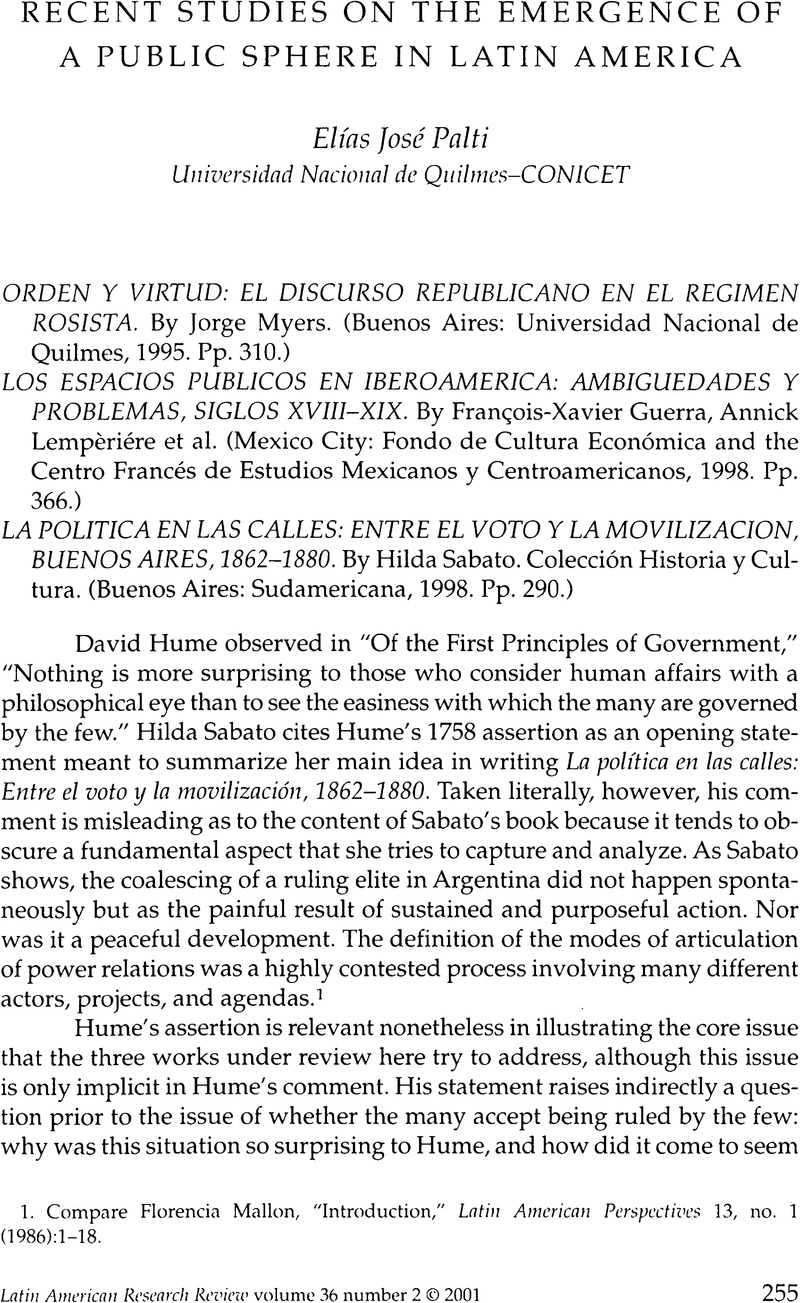Article contents
Recent Studies on the Emergence of a Public Sphere in Latin America
Review products
Published online by Cambridge University Press: 05 October 2022
Abstract

- Type
- Review Essays
- Information
- Copyright
- Copyright © 2001 by the University of Texas Press
References
1. Compare Florencia Mallon, “Introduction,” Latin American Perspectives 13, no. 1 (1986):1–18.
2. Guerra, Modernidad e independencias: Ensayos sobre las revoluciones hispánicas (Madrid: MAPFRE, 1993).
3. Keith Baker, “Public Opinion as Political Invention,” in his Inventing the French Revolution: Essays on the French Political Culture in the Eighteenth Century (Cambridge: Cambridge University Press, 1990), 196.
4. I am borrowing this expression from Natalio R. Botana and Ezequiel Gallo, De la república posible a la república verdadera (1880–1910) (Buenos Aires: Ariel, 1997).
5. For a discussion of the role of parties in nineteenth-century Latin America, see Elias José Palti, La política del disenso: La “polémica en torno al monarquismo” (México, 1848–1850)… y las aporias del liberalismo (Mexico City: Fondo de Cultura Económica, 1998).
6. Brian Vickers, “The Dangers of Dichotomy,” Journal of the History of Ideas 51 (1990):148–59, 150.
- 25
- Cited by


